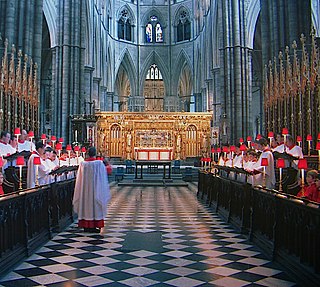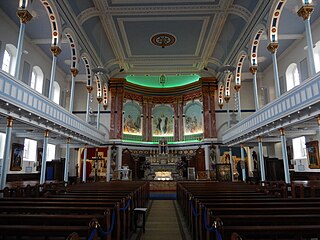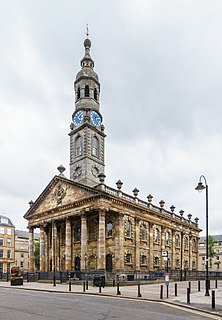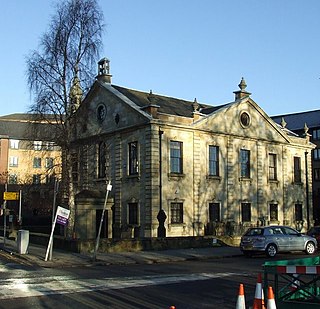The church commonly known as Glasgow Cathedral is the Church of Scotland High Kirk of Glasgow otherwise known as St. Mungo's Cathedral.

Glasgow Cathedral, also called the High Kirk of Glasgow or St Kentigern's or St Mungo's Cathedral, is the oldest cathedral on mainland Scotland and is the oldest building in Glasgow. Since the Reformation the cathedral continues in public ownership, within the responsibility of Historic Environment Scotland. The congregation is part of the established Church of Scotland's Presbytery of Glasgow and its services and associations are open to all. The cathedral and its kirkyard are at the top of High Street, at Cathedral Street. Immediately neighbouring it are Glasgow Royal Infirmary, opened in 1794, and the elevated Glasgow Necropolis, opened in 1833. Nearby are the Provand's Lordship, Glasgow`s oldest house and its herbal medical gardens, the Barony Hall, University of Strathclyde, Cathedral Square, Glasgow Evangelical Church, and St Mungo Museum.

The Church of Scotland, also known by its Scots language name, the Kirk, is the national church of Scotland. It is Presbyterian and adheres to the Bible and Westminster Confession; the Church of Scotland celebrates two sacraments, Baptism and the Lord's Supper, as well as five other rites, such as confirmation and matrimony. It is a member of the World Communion of Reformed Churches.
Other cathedrals in Glasgow are:
- St Andrew's Cathedral, Glasgow or Metropolitan Cathedral Church of Saint Andrew (Catholic)
- St Mary's Cathedral, Glasgow (Episcopal)
- Greek Orthodox Cathedral of St. Luke, Glasgow

The Metropolitan Cathedral Church of Saint Andrew or Glasgow Metropolitan Cathedral is a Roman Catholic Cathedral in the city centre of Glasgow, Scotland. It is the mother church of the Roman Catholic Archdiocese of Glasgow. The Cathedral, which was designed in 1814 by James Gillespie Graham in the Neo Gothic style, lies on the north bank of the River Clyde in Clyde Street. St Andrew's Cathedral is the seat of the Archbishop of Glasgow, currently the Most Reverend Philip Tartaglia. It is dedicated to the patron saint of Scotland, Saint Andrew.
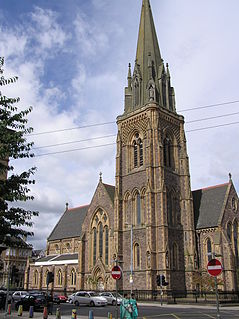
The Cathedral Church of St Mary the Virgin is a cathedral of the Scottish Episcopal Church. It is located on the Great Western Road, in the west end of Glasgow, Scotland. The current building was opened on 9 November 1871 as St Mary's Episcopal Church and was completed in 1893 when the spire was completed. The architect was George Gilbert Scott. It was raised to cathedral status in 1908. The total height of the cathedral is 63 metres. The church structure is protected as a category A listed building.
St. Luke's Greek Orthodox Cathedral is a cathedral of the Greek Orthodox Church located in the Dowanhill district of Glasgow, Scotland.
| This disambiguation page lists articles associated with the title Glasgow Cathedral. If an internal link led you here, you may wish to change the link to point directly to the intended article. |

